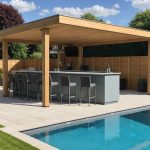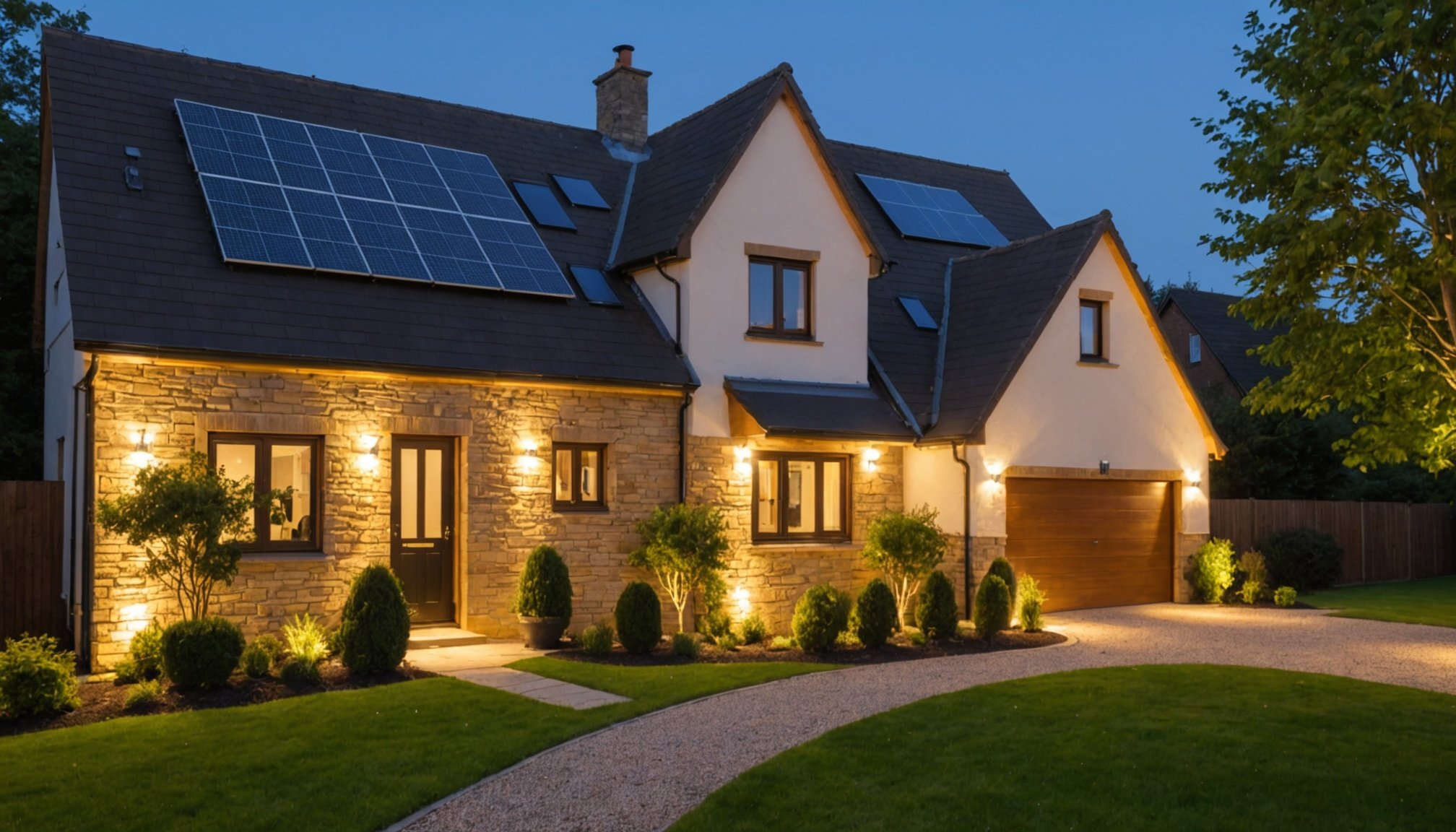Benefits of Eco-Friendly Solar Lighting
Eco-friendly solar lighting offers substantial benefits, primarily through its energy efficiency and environmentally friendly nature. These systems use renewable energy sourced from sunlight, drastically reducing reliance on traditional electricity. This, in turn, leads to a lower carbon footprint, contributing to cleaner and greener communities. The shift towards solar lighting solutions aligns with global sustainability goals aimed at reducing environmental impact.
Solar lighting systems also provide enhanced outdoor security and aesthetics. They effectively illuminate pathways, gardens, and entryways, deterring potential intruders and increasing safety for residents and visitors. Furthermore, the variety of designs available can significantly improve the appearance of outdoor spaces, merging functionality with visual appeal.
Also to read : Choosing the Ideal Portable Air Conditioner for Your UK Summer Home Office: A Guide for Temporary Spaces
Incorporating solar lighting into a property not only showcases a commitment to eco-friendly solutions but also offers practical energy-saving advantages. By leveraging the sun’s power, homeowners enjoy a virtually cost-free lighting solution after the initial installation. The energy efficiency achieved translates to lower utility bills over time, providing economic benefits. The technology is continually evolving, with advancements leading to improved performance and reliability, further solidifying solar lighting as a smart choice for eco-conscious homeowners.
Selecting Eco-Friendly Materials
Selecting eco-friendly materials for solar lighting is critical in making a positive environmental impact. Sustainable options not only help preserve natural resources but also enhance the overall durability and longevity of the lighting systems. Manufacturers now prioritise the use of recyclable and biodegradable components, reducing waste and promoting a circular economy.
This might interest you : Transforming Sleep: How UK Families Can Leverage Smart Technology to Enhance Sleep Hygiene in the Bedroom
When considering solar lighting systems, opt for products that incorporate materials like recycled aluminium, which is both lightweight and robust. Bamboo, a rapidly renewable resource, is another excellent material used in fixtures due to its strength and natural appeal. Such choices align with green technology principles, fostering sustainability in every aspect of the product lifecycle.
Several brands are pioneering efforts in eco-friendly manufacturing, showcasing their commitment to these values. For instance, Philips has developed a range of solar lights that utilise reclaimed plastics and metals. SunKing is another brand known for its dedication to sustainability, offering products with recyclable components.
By selecting fixtures made from sustainable materials, consumers can ensure their solar lighting not only serves as an eco-friendly solution but also supports energy efficiency and reduces environmental impact over time.
Step-by-Step Guide to Designing Solar Lighting Systems
Designing solar lighting systems involves thoughtful planning to maximise energy efficiency and enhance outdoor spaces. This step-by-step guide will help navigate the process effectively.
Assessing Outdoor Lighting Needs
Start by determining key areas requiring illumination such as pathways, entryways, and gardens. This assessment identifies existing light sources and any coverage gaps. By pinpointing these areas, you optimise not only aesthetic appeal but also home security. Proper illumination reduces dark spots, deterring intruders.
Choosing the Right Solar Lighting Fixtures
Different types of solar fixtures offer various benefits. LED fixtures are known for lighting efficiency, while string lights add aesthetic charm. Spotlights focus on security. Consider factors such as brightness, battery life, and aesthetics when selecting fixtures. Choose fixtures that match your outdoor aesthetic while fulfilling the necessary functional requirements.
Planning Layout and Installation
An effective layout ensures solar lights capture maximum sunlight. Place fixtures where they’ll receive unobstructed sunlight throughout the day. This enhances their energy efficiency and ensures longevity. Additionally, proper installation involves securing fixtures firmly to prevent displacement. Ensure the stability of all light installations to withstand environmental conditions and maintain effectiveness over time.
Aesthetic Design Considerations
Integrating solar lighting into your landscape can significantly enhance outdoor aesthetics while maintaining functionality. The key is to align with the landscape’s natural elements, creating a seamless blend of light and design.
Consider opting for decorative lighting fixtures that complement your garden’s theme or architectural style. For instance, solar lanterns can add a quaint charm, while sleek, modern lights may suit minimalistic setups. Achieving balanced illumination involves thoughtful placement—spreading light sources evenly throughout the space prevents overly bright or dim areas.
Landscaping integration is crucial for successful design. Use path lights to illuminate walkways subtly, or incorporate spotlights to highlight specific garden features, like trees or statues. Solar string lights draped over shrubs or pergolas can add a festive touch without overwhelming the surroundings.
For inspiration, many UK homeowners create stunning setups that merge attractiveness with eco-friendliness. One homeowner in Cheshire cleverly placed lighting along stone pathways and around a water feature, resulting in a serene, inviting atmosphere. By focusing on integrating solar lighting with existing natural and architectural elements, you can craft captivating outdoor spaces that are both practical and aesthetically pleasing.
Understanding Local Regulations and Guidelines
Incorporating solar lighting involves understanding UK lighting regulations and ensuring compliance with solar energy guidelines. While solar installations generally require fewer approvals, it’s essential to adhere to local codes to avoid complications.
Regulatory Guidelines
Local planning authorities often stipulate certain requirements for outdoor lighting to minimise light pollution and ensure safety. For example, the lighting should not pose a nuisance to neighbours or affect wildlife negatively. Ensuring your system complies with these regulations helps maintain harmony with the community.
Necessary Permits
For most domestic solar lighting projects, extensive permits aren’t necessary. However, checking with local councils about any specific conditions or exceptions is prudent. Adhering to these guidelines ensures a smooth installation process.
Best Practices for Compliance
- Positioning Lights: Align lights to minimise glare and prevent light trespass.
- Brightness Levels: Use fixtures with adjustable brightness to comply with specific location needs.
- Environmental Consideration: Select lights that minimise impact on surroundings, enhancing local ecosystems rather than disturbing them.
By embracing these practices, you can enhance visibility while ensuring environmentally-sensitive and regulation-compliant installations.
Maintaining and Upgrading Solar Lighting Systems
Solar lighting systems rely on routine maintenance to ensure optimal performance and longevity. Neglecting this can lead to reduced efficiency. Regularly clean solar panels and fixtures to prevent dirt build-up which can obstruct sunlight absorption, lowering energy output. Also, conduct battery checks periodically. Batteries are crucial components; timely replacements ensure consistent lighting functionality.
Routine Maintenance Tips
To maintain your system, gently wash panels with soapy water and a soft cloth. Avoid abrasive materials that may scratch surfaces. Battery checks should involve inspecting connections for corrosion. Optimal care extends system longevity, offering sustainable lighting solutions.
Upgrading to More Efficient Systems
Advancements in solar technology continue to enhance efficiency. Consider upgrading to newer models equipped with features like higher-capacity batteries and advanced sensors for better energy management. Such upgrades not only improve performance but also support increased energy efficiency, reducing further utility costs.
Troubleshooting Common Issues
Familiarise yourself with common troubleshooting practices. If lights fail, check for obstructions blocking solar panels or ensure batteries are charged and properly connected. Addressing issues promptly maintains uninterrupted functionality year-round, allowing homeowners to fully enjoy the benefits of their solar lighting systems.











